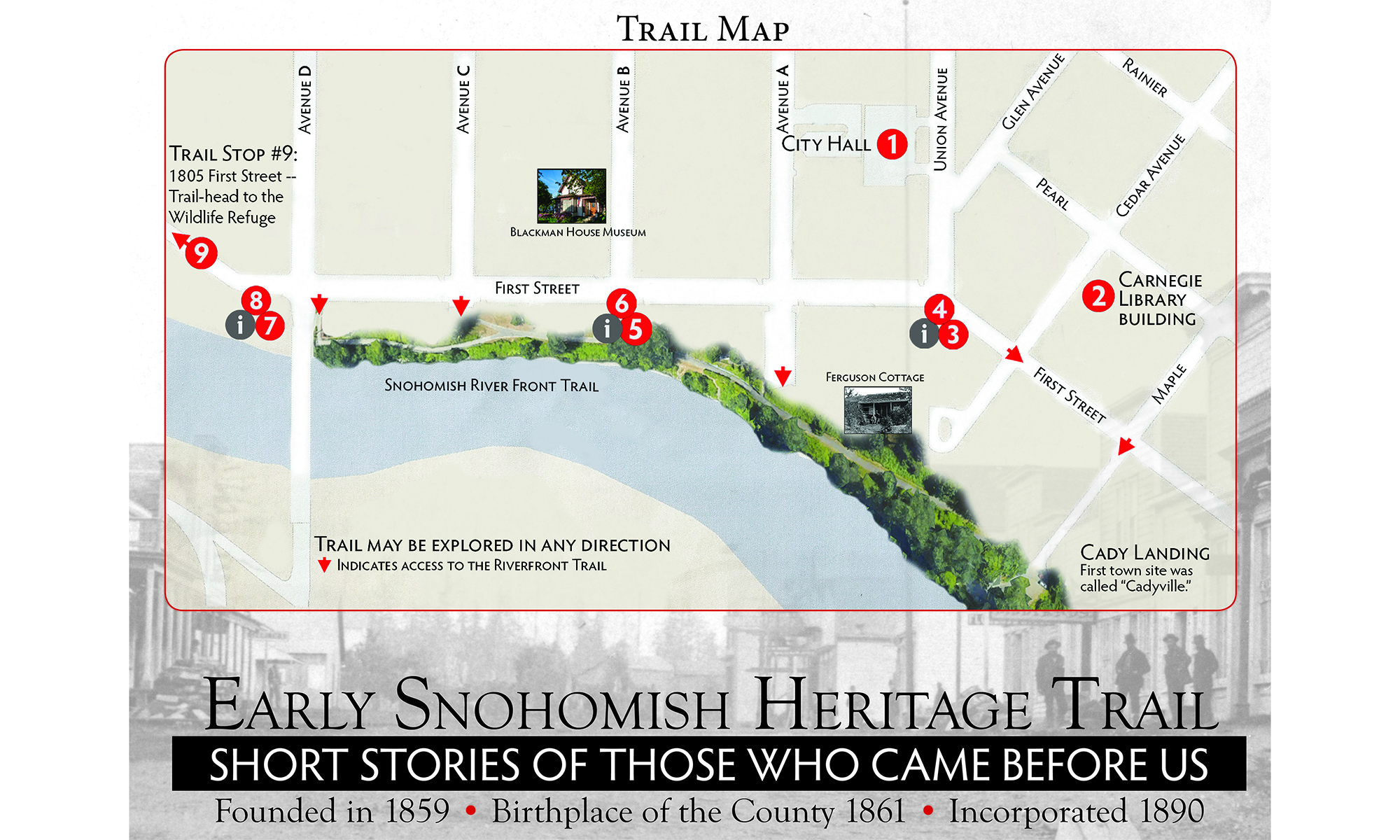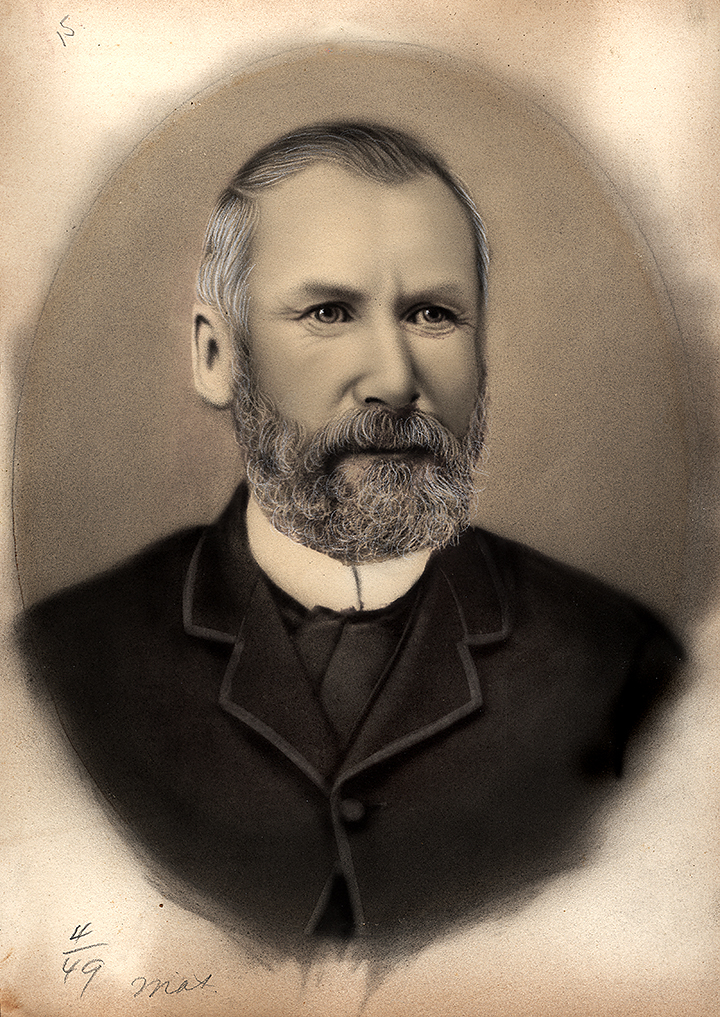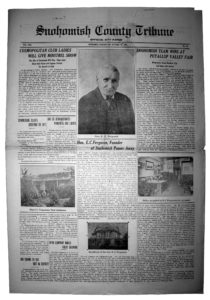Following up on last month’s post proposing a heritage trail for Snohomish, we are going to take a closer look at what the content might be for this trail in the next several posts.
To review, the proposal is to re-purpose the three-pole wayfinder clusters on First Street which will display three interpretive signs. Each wayfinder cluster will be considered an Act in the story of Snohomish’s founding, and each sign will be a Scene.
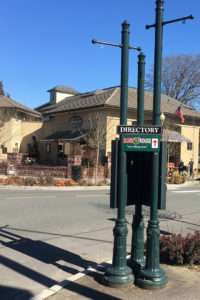
View of the existing wayfinder custer on First Street at Union Avenue, showing the location of the west facing interpretative sign.
Click image to enlarge
For example, this month we will use the wayfinder cluster at Union Street, it will be called Act One. The first Scene will be the sign facing west which will include the content outlined in this post titled The Founder Who Stayed.
Emory Canada Ferguson never returned to his home town in upstate New York after leaving at the age of 21 to find gold in California. He found instead a town in Washington Territory that he and his wife Lucetta gave the Indian name of the river that runs through it.
“Here he served as postmaster, mayor, realtor, saloon keeper, store proprietor, legislator — even justice of the peace — and was on hand to give birth to Snohomish County when it was formed in January of 1861.
A well-loved pioneer figure in his senior years, “Old Ferg” helped to humorously craft his own image through his writings and after-dinner speeches in which he depicted himself as a rugged pioneer once living alone in the wilderness.”
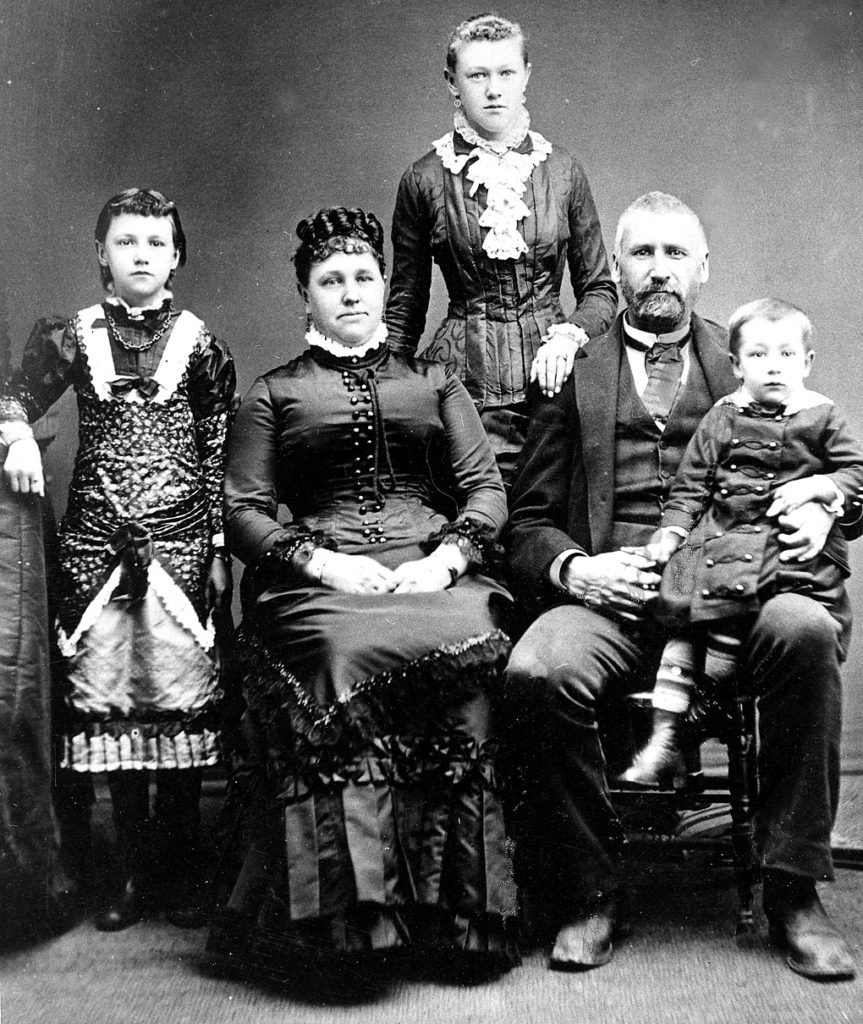 The Ferguson Family Portrait, c.1890, the year Snohomish Incorporated. From the left: Ivy Maude, born in 1875; Lucetta, married to E.C. in 1868; Sylvia M., the first born in 1869; Emory Canda, with son Cecil sitting on his lap, born in 1881.
The Ferguson Family Portrait, c.1890, the year Snohomish Incorporated. From the left: Ivy Maude, born in 1875; Lucetta, married to E.C. in 1868; Sylvia M., the first born in 1869; Emory Canda, with son Cecil sitting on his lap, born in 1881.
Courtesy Snohomish Historical Society; click image to enlarge
The Snohomish Daily Sun reported this talk before the Wranglers organization on December 19, 1889:
Ladies and Gentlemen — I have had very little time to prepare, or think over this subject so I will have to tell it just as it comes to mind. Snohomish County was up to about the year 1860 a part of Island County. At about that time it was separated from Island and the present county of Snohomish was created. I don’t know there was any reason for doing so unless there were more politicians than counties and the matter was adjusted by making another county rather than killing some of the politicians.
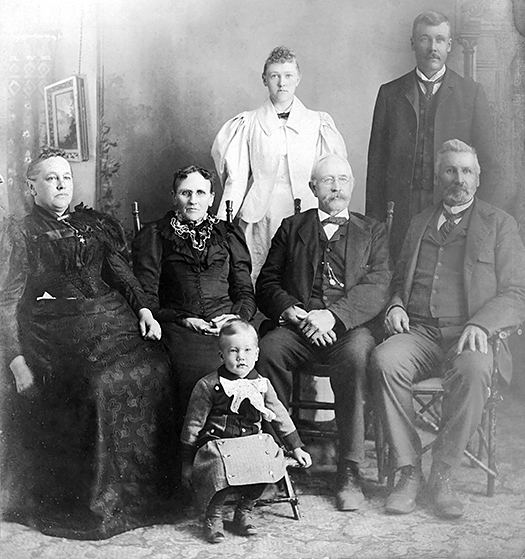 A vital photograph of three generations of Snohomish’s Leading Family and it’s undated, but we can make a good guess based on guessing the age of the toddler Norman Lenfest, seated and dressed like a gentleman in the first row, who was born in 1893; behind him, seated in a neat row of chairs are his grand and great-grandparents, on the left is Lucetta (Morgan) Ferguson, (1849-1907); Mary Trout Morgan (1829-1903); Hiram Morgan (1822-1906); and E.C.Ferguson (1833-1911); finally, standing are Norman’s parents Sylvia (Ferguson) Lenfest (1869-1952), and Elmer Lenfest (1864-1938) who were married in the Ferguson home in 1891. As to guessing the date, some say 1897, but the museum label would read circa 1900, which means around that time.
A vital photograph of three generations of Snohomish’s Leading Family and it’s undated, but we can make a good guess based on guessing the age of the toddler Norman Lenfest, seated and dressed like a gentleman in the first row, who was born in 1893; behind him, seated in a neat row of chairs are his grand and great-grandparents, on the left is Lucetta (Morgan) Ferguson, (1849-1907); Mary Trout Morgan (1829-1903); Hiram Morgan (1822-1906); and E.C.Ferguson (1833-1911); finally, standing are Norman’s parents Sylvia (Ferguson) Lenfest (1869-1952), and Elmer Lenfest (1864-1938) who were married in the Ferguson home in 1891. As to guessing the date, some say 1897, but the museum label would read circa 1900, which means around that time.
Courtesy Snohomish Historical Society; click image to enlarge
The first election, I think was held in June for the purpose of deciding whether the county seat should remain at Mukilteo, then the largest town in the county. The election was a very hot one and owing to the large settlement which had located up on the Snohomish River they succeeded in moving the county seat from the metropolis to its present location. The vote after a long and tedious count was determined to be ten for Mukilteo and eleven for Snohomish.
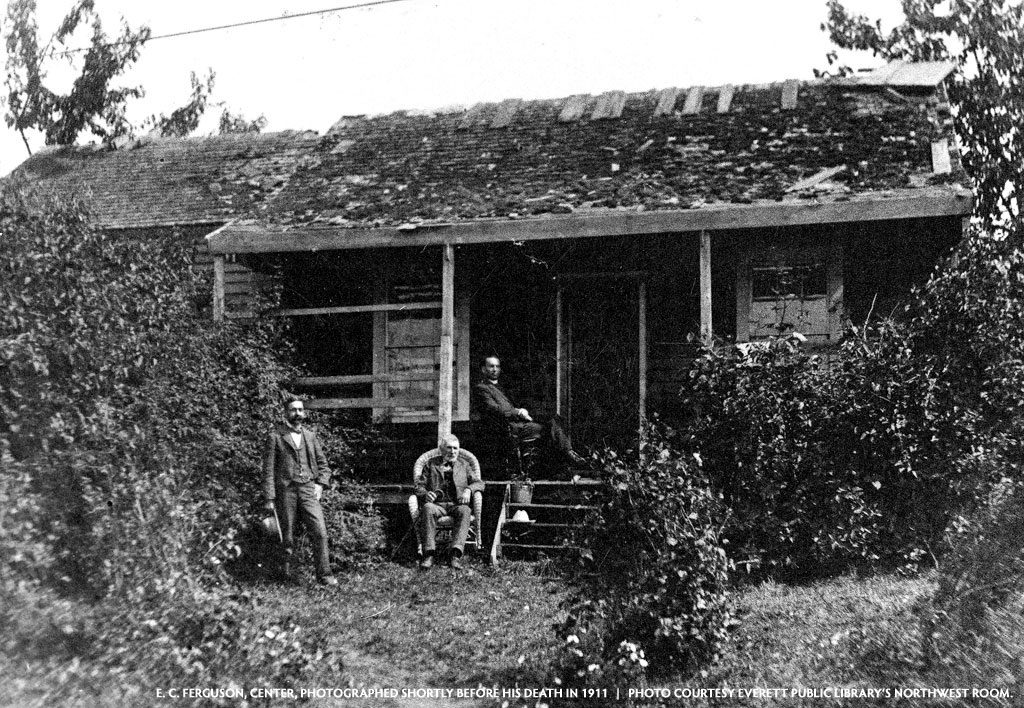 This was Ferguson’s first residence, referred to as a cottage, which he built in Steilacoom and then disassembled it in order to ship the modest structure north. This was his favorite home he once said and it’s the only one of his three homes that is still standing and privately owned. Its location is indicated by a stone marker on the River Front Trail. It’s where Ferguson celebrated his first Fourth of July in Snohomish.
This was Ferguson’s first residence, referred to as a cottage, which he built in Steilacoom and then disassembled it in order to ship the modest structure north. This was his favorite home he once said and it’s the only one of his three homes that is still standing and privately owned. Its location is indicated by a stone marker on the River Front Trail. It’s where Ferguson celebrated his first Fourth of July in Snohomish.
Courtesy Everett Public Library, Northwest Room; click to enlarge
I remember well the first Fourth of July celebration in Snohomish. It was in ’61 and on the day, without following any preliminary or elaborate program, I took the old Yeger musket that the government furnished in those days to its frontier army — and going outside, blazed away volley after volley till I thought the day had been suitably observed, and then returned the old musket to its accustomed corner. It was a patriotic observance of the day, though there was no one present or within hearing but myself, to participate.
“He smiled as he recalled this reminiscence of early days in Snohomish, reported the Everett Daily Herald, February 6, 1902. “The audience was anxious for Mr. Ferguson to go on, but he said it would take all night to tell a small part of the story of the early life in Snohomish and that he might as well quit where he was.”
Ferguson died on October 7, 1911, and is buried in Snohomish’s Grand Army of the Republic Cemetery, as are the family members pictured in this post. Several descendants still live in the Snohomish area.
. . . .
Featured Image above: A crayon portrait of town founder E. C. Ferguson, ca.1890. Removed from its frame for preservation, replaced with a digital copy and returned to its place in today’s city hall.
. . . .
“Emory C. Ferguson Recalls Early Days in Snohomish County,” accessed March 17, 2019,
https://www.historylink.org/File/8492
